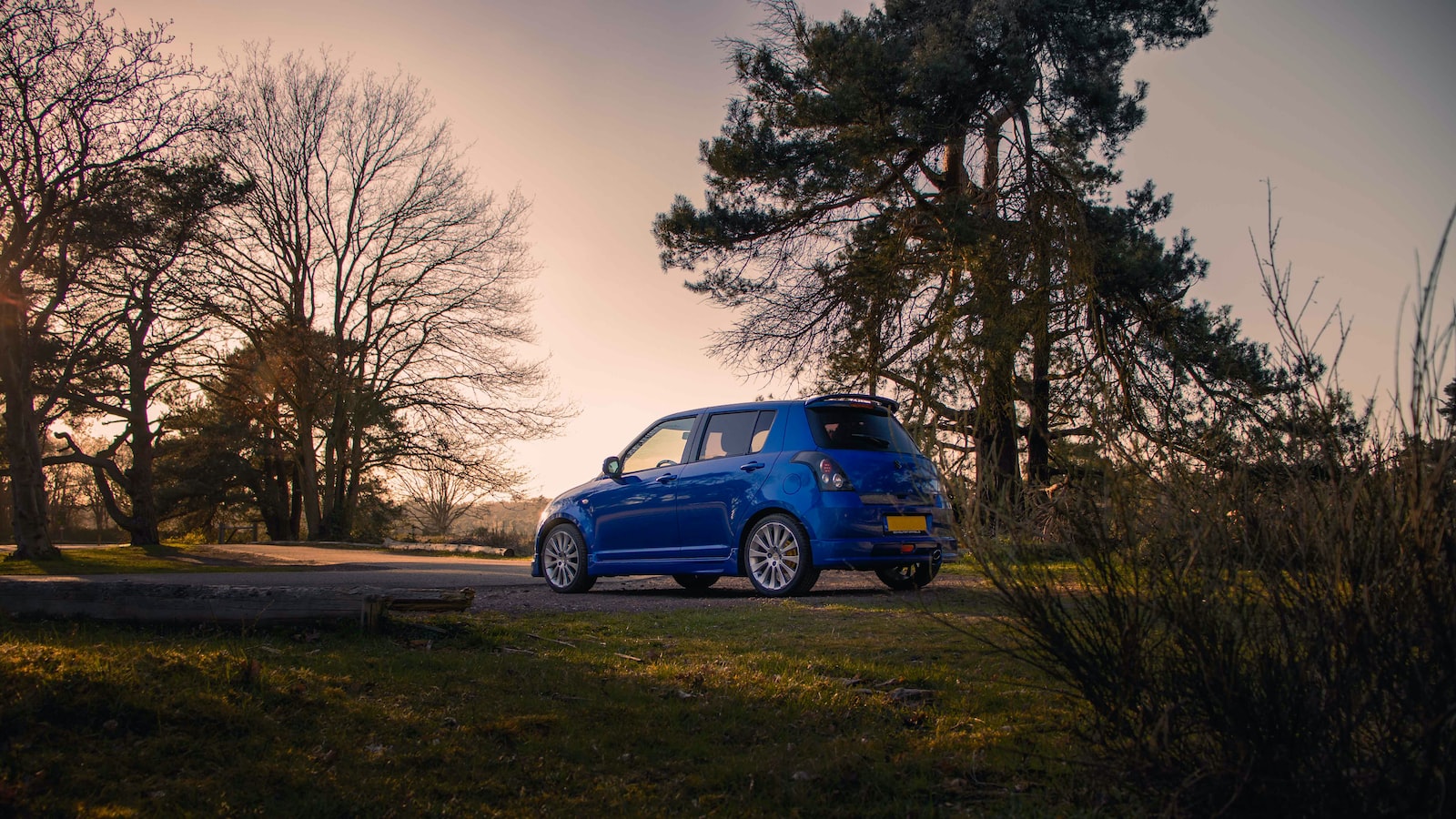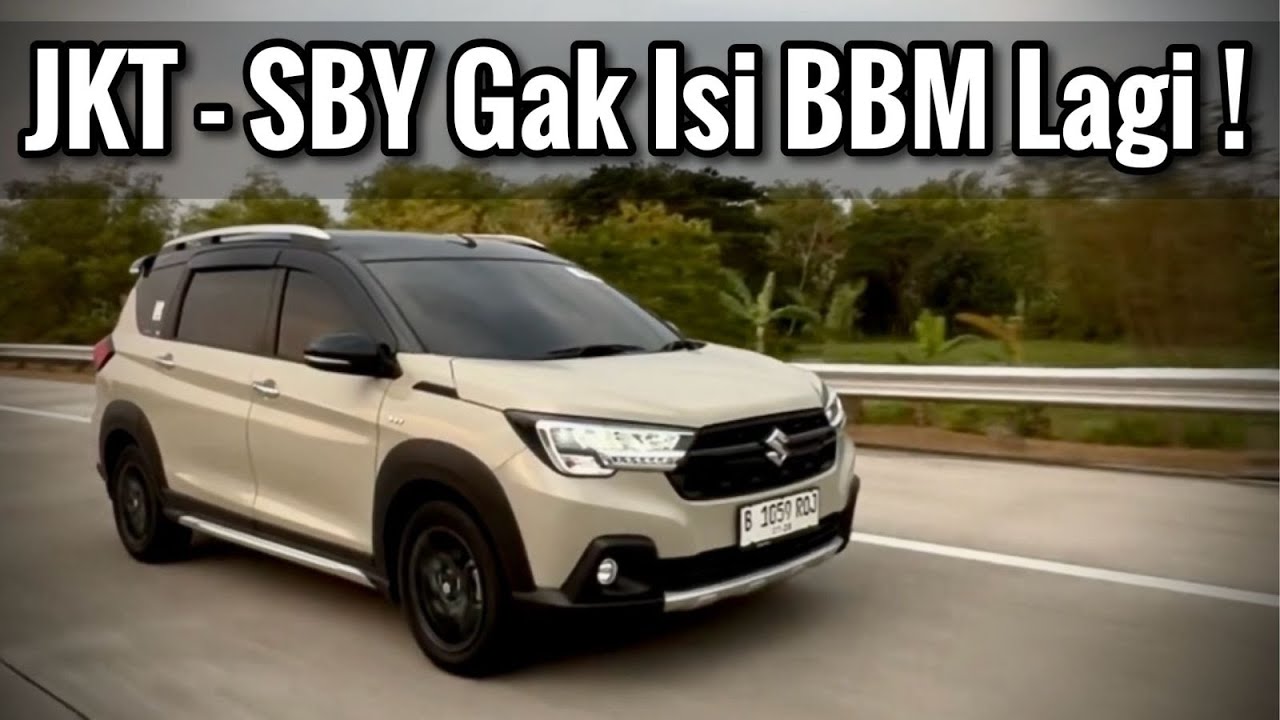Welcome to the blog post discussing the intriguing YouTube video titled "SUZUKI XL7 Smart Hybrid Indikator Bensin Seakan Gak Berfungsi". In this video, the host delves into the world of the Suzuki XL7, a crossover with almost hybrid-like qualities that seems to defy traditional fuel indicators. But before we dive into the details, let’s take a moment to appreciate the creative approach Suzuki has taken with their vehicles over the years. From the game-changing Jimny to the class-shifting Baleno, Suzuki has always sought to stand out from the crowd. Now, with the XL7, they have once again showcased their uniqueness, offering a crossover that blurs the line between SUV and MPV. Despite its smaller size, this Suzuki gem has proven its ability to travel from Jakarta to Surabaya on just a single tank of fuel. The video takes us along for the ride, as the host puts this claim to the test, ultimately proving its impressive fuel efficiency. Stay tuned as we explore more captivating features and reviews of the Suzuki XL7.
- Introduction to Suzuki XL7 Smart Hybrid: A Unique Crossover with Almost Hybrid Engine

The Suzuki XL7 Smart Hybrid is a unique crossover that showcases an almost hybrid engine, making it one of a kind in the world. This crossover, which is based on an MPV, stands out with its impressive features and capabilities. It has the ability to travel from Jakarta to Surabaya, a long distance in Indonesia, with just one tank of fuel.
Suzuki has always been known for creating vehicles that are in a league of their own, and the XL7 is no exception. Just like the pioneering Jimny SUV, which had no competitors at the time of its release, the XL7 sets itself apart from other SUVs and crossovers by offering a small engine and compact body. However, Suzuki has taken a unique approach by downgrading the XL7’s class, similar to what they did with the Baleno in the past. Despite this, the XL7 still maintains the SUV characteristics that drivers desire, such as a V6 engine with a capacity of 2500 cc.
The first generation of the XL7 was introduced in 1998 and entered the Indonesian market in 2003. With its SUV-like appearance resembling the Grand Escudo, it quickly attracted attention. However, its high price and lack of 4×4 capabilities made it less popular among Indonesian consumers. Since then, Suzuki has not released a second generation of the XL7 in Indonesia, although it was launched in other countries in 2006 with a larger size than its predecessor. It wasn’t until 2020 that Suzuki Indonesia introduced the XL7 we see today, which turned out to be a crossover built on an MPV platform. Despite the downgrade in its name, this unique hybrid XL7 has met the needs of Indonesian consumers, transforming it from a fuel-consuming vehicle to a fuel-efficient car. In fact, it has been proven that you can drive the XL7 from Jakarta to Surabaya, covering a distance of 700 km, with just one tank of fuel. To see the proof, you can watch the firsthand experience on the Motomobi and Fitra Eric channels.
– The History of Suzuki XL7: Uniqueness and Differentiation in Suzuki’s Lineup

The Suzuki XL7 has a rich history that sets it apart from other vehicles in Suzuki’s lineup. Known as a crossover that is based on an MPV, the XL7 stands out as the only crossover with almost hybrid-like features, making it a unique choice for buyers all around the world. One of Suzuki’s trademarks is creating cars that have no competitors or are distinctly different from others in the market, and the XL7 is no exception.
A prime example of Suzuki’s uniqueness is the Jimny, a compact SUV that was a pioneer in its category in Indonesia. While other SUVs had large and fuel-consuming engines, the Jimny came with a small engine and a small body, providing a refreshing alternative. Suzuki’s desire to be different also reflects in their decision to lower the class of some of their models, such as the Suzuki Baleno, which initially competed with cars like the Civic, Corolla, or Lancer, but now targets a similar audience as the Yaris or Jazz. This trend is also observed with the Suzuki XL7, a crossover that has SUV-like features, making it stand out from other crossovers in the market.
The first generation of the Suzuki XL7 appeared in 1998 and entered the Indonesian market in 2003. Its design leaned more towards an SUV, resembling the Grand Escudo, and it had a capacity to accommodate 7 passengers. While many people dream of owning an SUV with a V6 engine and a capacity of 2500 cc, the XL7’s high price tag made it inaccessible to most Indonesians. Additionally, its lack of 4×4 capabilities hindered its market success. Despite these challenges, the first generation of the XL7 gained popularity in Indonesia. However, no signs of a second generation were seen until 2020 when Suzuki Indonesia introduced the new Suzuki XL7.
This new model, though carrying the same name, took a different approach. It transformed from a pure SUV into a crossover that emerged from an MPV base. The decision to downgrade its name from the previous XL7 showcased Suzuki’s unique characteristics. Despite being a downgrade, it turned out that this is what the Indonesian market desired. The XL7 Hybrid manages to offer fuel efficiency, addressing the need for a car that is both economical and fuel-saving. In fact, with just one full tank of fuel, the XL7 Hybrid can cover a distance of 700 km from Jakarta to Surabaya, as proven by direct tests conducted by renowned automotive channels. This remarkable feat solidifies the XL7 Hybrid as a practical and efficient choice for Indonesian consumers.
– Suzuki XL7: Transition from SUV to Crossover and the Impact on Indonesian Market

The Suzuki XL7 has made a significant transition from an SUV to a crossover, and this shift has had a remarkable impact on the Indonesian market. This unique crossover is based on an MPV and stands out as one of the few hybrids in the world. It is the only crossover that can travel from Jakarta to Surabaya with just one tank of fuel.
Suzuki has a history of creating vehicles that have no competition, and the XL7 is no exception. Just like the iconic Jimny, which was the pioneer of compact SUVs in Indonesia, the XL7 sets itself apart by offering a smaller body and engine compared to other SUVs in the market. However, Suzuki has always had a knack for challenging conventions and lowering its class, as seen with the Suzuki Baleno in the past. The first-generation XL7, introduced in 1998 and launched in Indonesia in 2003, had a more SUV-like appearance, resembling the Grand Escudo, and could accommodate seven passengers.
Despite its appeal, the first-generation XL7 was considered expensive for the Indonesian market and lacked the 4×4 capability that SUV enthusiasts desired. As a result, it failed to gain traction, and Suzuki discontinued it after the initial release. However, Suzuki surprised everyone in 2020 by introducing the second-generation XL7, which took a different approach. The new XL7, although carrying the same name, transitioned from an SUV to a crossover, derived from an MPV. This move by Suzuki, though seen as a downgrade, turned out to be exactly what Indonesian consumers needed – a more fuel-efficient alternative. The XL7 Hybrid provided an economical solution, allowing motorists to traverse the 700-kilometer distance between Jakarta and Surabaya on a single tank of fuel, as demonstrated in reviews by motoring channels such as Motomobi and Fitra Eric. This combination of efficiency and affordability has made the XL7 a popular choice in the Indonesian market and a worthy rival to other crossovers.
– Suzuki XL7 Smart Hybrid: Fuel Efficiency and Impressive Mileage

Suzuki XL7 Smart Hybrid is a crossover that is based on an MPV, making it a unique and innovative vehicle in its class. Suzuki has always been known for creating cars that are incomparable, just like their popular model, the Jimny. The Jimny was a pioneer SUV that had no competition in Indonesia, with its small body and fuel-efficient engine, it stood out among its counterparts.
Now, Suzuki is breaking boundaries once again with the Suzuki XL7. This crossover brings together the best of both worlds, combining the spaciousness of an MPV with the style and performance of an SUV. The XL7 Smart Hybrid is not only fuel-efficient but also offers impressive mileage. With just one tank of fuel, you can travel from Jakarta to Surabaya, covering a distance of 700 KM, without having to refuel. It’s a testament to the vehicle’s exceptional fuel economy and its ability to save you money in the long run.
One of the standout features of the Suzuki XL7 Smart Hybrid is its hybrid technology. The hybrid system seamlessly combines the power of a conventional engine with an electric motor, resulting in improved fuel efficiency and reduced emissions. This means that you not only save money on fuel costs but also contribute to a cleaner and greener environment.
Additionally, the XL7 Smart Hybrid offers a spacious and comfortable interior, with seating for up to seven passengers. The crossover’s design is sleek and modern, with bold lines and a distinctive front grille, giving it a sporty and sophisticated appearance.
In conclusion, the Suzuki XL7 Smart Hybrid is a game-changer in the crossover segment. Its fuel efficiency, impressive mileage, and hybrid technology make it a practical and eco-friendly choice for those who want a versatile and stylish vehicle. So, why settle for less when you can have the best of both worlds with the Suzuki XL7 Smart Hybrid? In conclusion, the YouTube video titled "SUZUKI XL7 Smart Hybrid Indikator Bensin Seakan Gak Berfungsi" discusses the unique features and history of the Suzuki XL7. This crossover, which is based on an MPV, stands out as one of the few almost hybrid vehicles in the world. It boasts the ability to travel from Jakarta to Surabaya with just one tank of fuel, showcasing its impressive fuel efficiency. Suzuki has always been known for creating cars that are different from the rest, just like the iconic Jimny SUV. The Suzuki XL7 continues this trend by offering a crossover that is more SUV-like in appearance while still providing the convenience and space of an MPV. Despite its initial high price and lack of 4×4 capability, the XL7 has found success in Indonesia due to its affordability and fuel efficiency, meeting the needs of the Indonesian market. The video also features a review of the XL7’s performance, with the car impressively driving 700 kilometers from Jakarta to Surabaya on just one tank of fuel. You can find the full review on the Motomobi and Fitra Eric YouTube channels. Overall, the Suzuki XL7 Smart Hybrid offers a unique and practical option for those looking for a crossover that merges the best of both SUV and MPV worlds.
